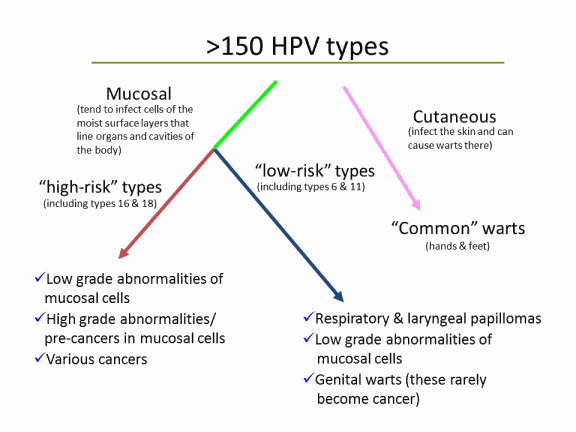Does an HPV infection lead to cancer? Understand HPV correctly, starting with learning about it!
Human Papillomavirus (HPV) refers to a group of over 200 distinct viral types, more than 40 of which can infect the genital and anal regions. These viruses can cause benign epithelial lesions (such as warts) and have the potential to lead to certain cancers.
HPV Types
◆Low-risk types: Primarily cause genital warts and laryngeal papillomas. Common low-risk types include HPV 6 and HPV 11. These types generally do not progress to cancer.
◆High-risk types: Associated with oncogenic potential, leading to malignancies such as cervical, vaginal, vulvar, anal, and oropharyngeal cancers. High-risk types include HPV 16 and HPV 18. These types can induce genetic alterations in host cells, resulting in carcinogenesis.

Transmission
HPV is transmitted through direct skin-to-skin contact, predominantly during sexual intercourse. Non-sexual transmission can occur via contact with contaminated surfaces, such as those in public swimming pools or showers.
Prevention
◆Vaccination: HPV vaccines (e.g., Gardasil and Cervarix) are effective in preventing infections by high-risk HPV types, particularly HPV 16 and HPV 18. Vaccination is recommended for adolescents but is also available for adults. The optimal timing for vaccination is prior to the onset of sexual activity.
◆Regular Screening: Cervical cancer screening is conducted via Pap smears and HPV testing. Pap smears detect cytological abnormalities, while HPV testing identifies high-risk HPV infections.
◆Safe Sexual Practices: Condoms can reduce the risk of HPV transmission but do not provide complete protection due to potential exposure of uncovered areas.
◆Avoid Sharing Personal Items: Reducing the risk of HPV infection by avoiding sharing personal items like razors or toothbrushes is advised.
Symptoms and Diseases
◆Genital Warts: Manifest as small, flesh-colored or gray papules, which may be flat or raised, and often occur in clusters.
◆Cancer: High-risk HPV infections can lead to precancerous changes and, if untreated, progress to cancer. Early detection and intervention are crucial for improving prognosis and treatment outcomes.
Here are some common misconceptions about HPV:
1. HPV infection only affects women and mainly causes cervical cancer.
Men can also be infected with HPV, and certain high-risk types are closely linked to penile, anal, and oropharyngeal cancers. HPV can also cause genital warts in men. Therefore, both men and women need to be aware of the risks associated with HPV.
2. HPV infection always leads to cancer.
Most HPV infections are transient and typically clear on their own within months to a few years. Only a few high-risk HPV types are associated with cancer, and not all infections will result in malignancy.
3. The HPV vaccine is unnecessary, especially for those already infected with HPV.
The HPV vaccine can prevent the most common high-risk HPV types linked to cancer. Even if a person has already been infected with one type of HPV, the vaccine can still protect against other types.

4. HPV can only be transmitted through sexual contact.
While HPV is primarily transmitted through sexual contact, it can also spread through non-sexual means, such as kissing or sharing personal care items (like razors). Any contact with an infected person carries a risk of transmission.
5. There are no symptoms after an HPV infection.
Most HPV infections are asymptomatic, but certain low-risk types (HPV 6 & 11) can cause genital warts (visible flesh-colored or gray bumps). High-risk types may remain dormant for years without symptoms, potentially leading to cellular mutations later on.

6. The nine-valent (9-valent) vaccine is the best option.
Currently, bivalent, quadrivalent, and nine-valent HPV vaccines are available, all of which cover HPV types 16 and 18, which are strongly associated with cervical cancer. For women of appropriate age, the best vaccine is the one available for immediate protection, so vaccination should be done as early as possible.

















